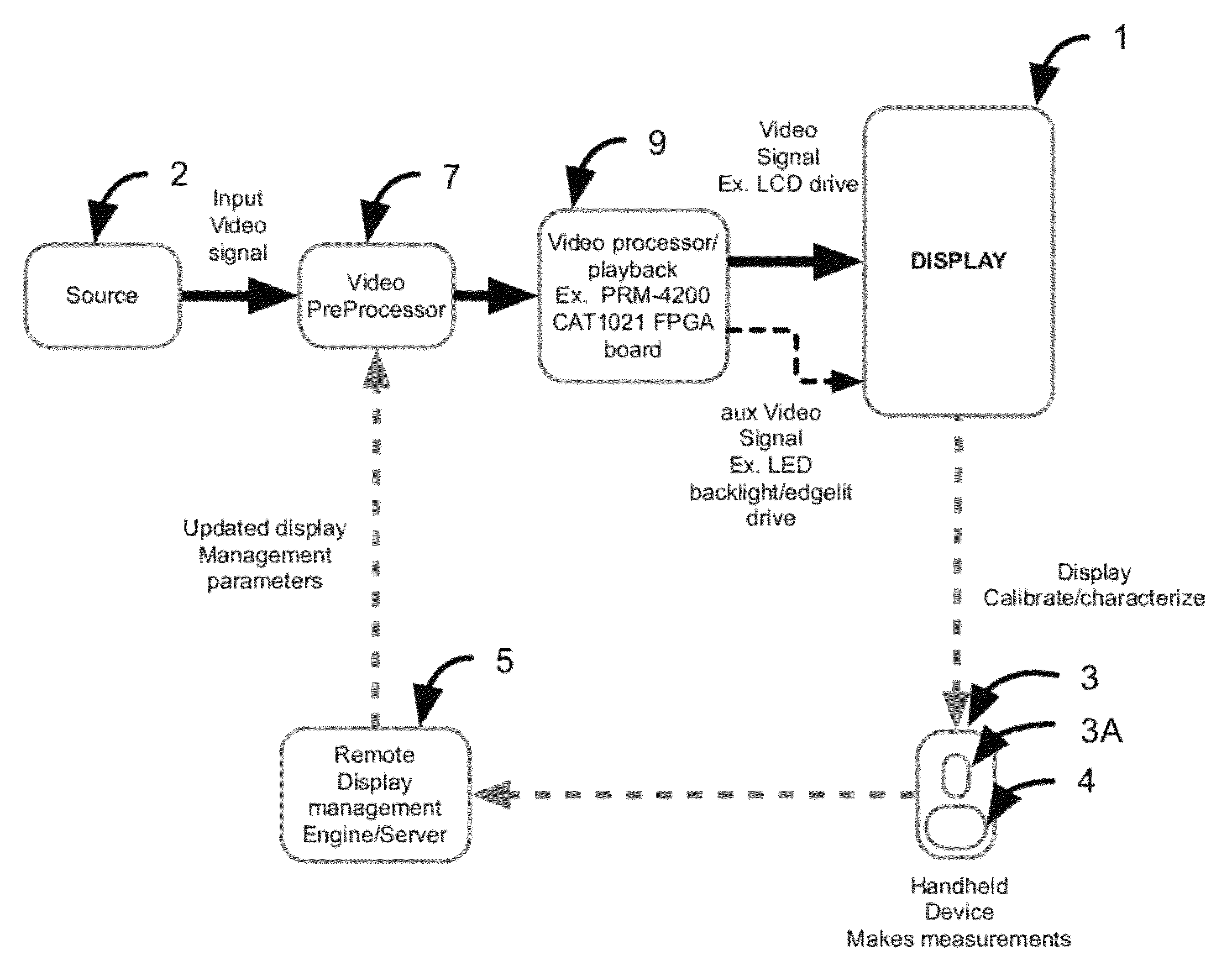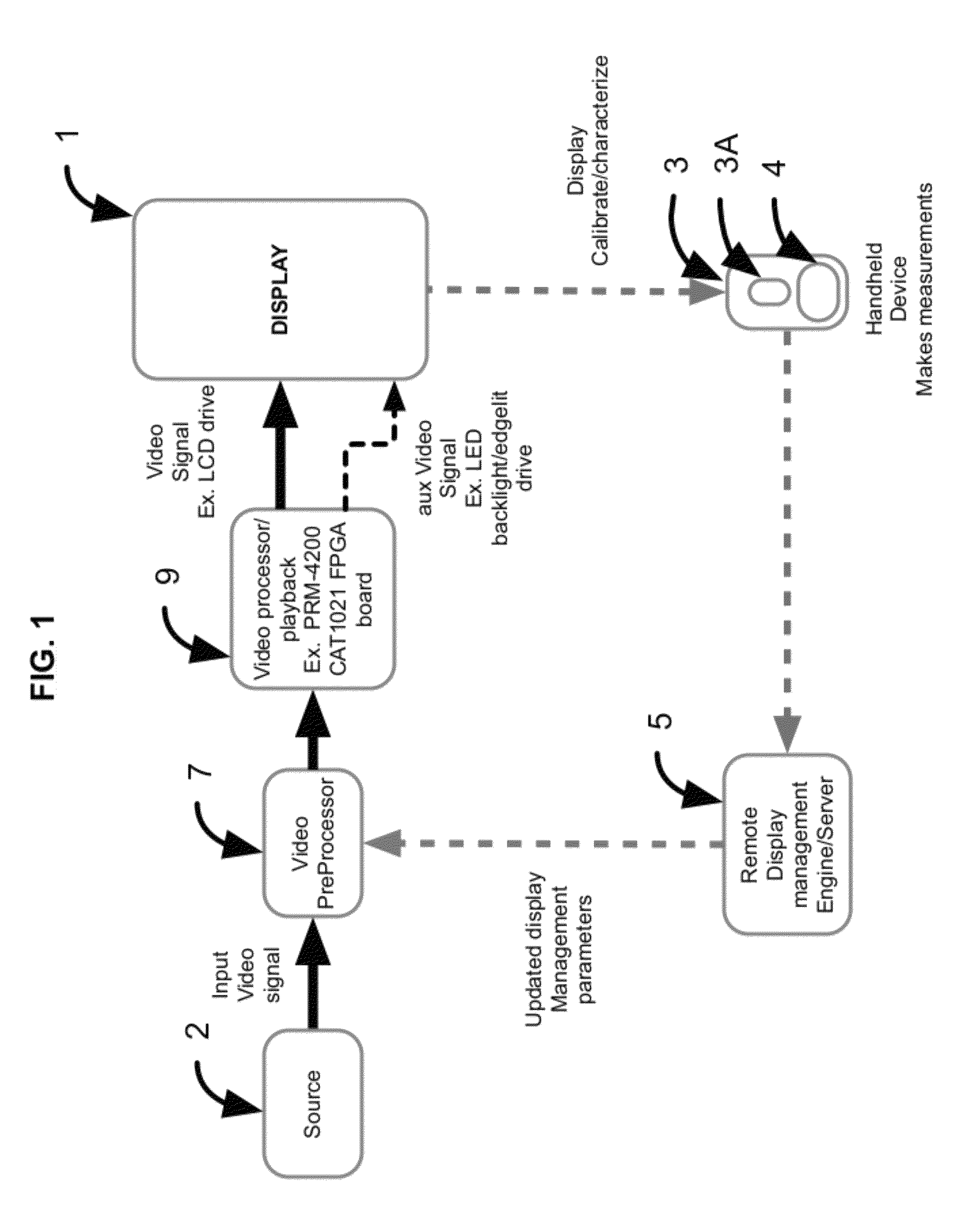Method and system for display calibration with feedback determined by a camera device
a camera device and calibration method technology, applied in the field of system and method for display calibration, can solve the problems of dire consequences in the production environment, repair and/or recalibration can be very expensive, and achieve the effect of efficient recalibration and accurate display managemen
- Summary
- Abstract
- Description
- Claims
- Application Information
AI Technical Summary
Benefits of technology
Problems solved by technology
Method used
Image
Examples
Embodiment Construction
[0044]Many embodiments of the present invention are technologically possible. It will be apparent to those of ordinary skill in the art from the present disclosure how to implement them. Embodiments of the inventive system and method will be described with reference to FIGS. 1-3.
[0045]FIG. 1 is a block diagram of an embodiment of the inventive system. The system of FIG. 1 includes display device 1 configured to display images sequentially in response to a video input signal from source 2. Display device 1 may be implemented as any of a variety of display devices, (e.g., a standard LCD display, a high contrast LCD display, or another display device). For example, in a class of implementations, device 1 is an LED or LCD display including a front panel (comprising an array of LCD or LED pixels) and a backlighting (or edge-lighting) system for illuminating the pixels of the front panel. A backlighting system typically includes a backlight panel comprising an array of individually contro...
PUM
 Login to View More
Login to View More Abstract
Description
Claims
Application Information
 Login to View More
Login to View More - R&D
- Intellectual Property
- Life Sciences
- Materials
- Tech Scout
- Unparalleled Data Quality
- Higher Quality Content
- 60% Fewer Hallucinations
Browse by: Latest US Patents, China's latest patents, Technical Efficacy Thesaurus, Application Domain, Technology Topic, Popular Technical Reports.
© 2025 PatSnap. All rights reserved.Legal|Privacy policy|Modern Slavery Act Transparency Statement|Sitemap|About US| Contact US: help@patsnap.com



